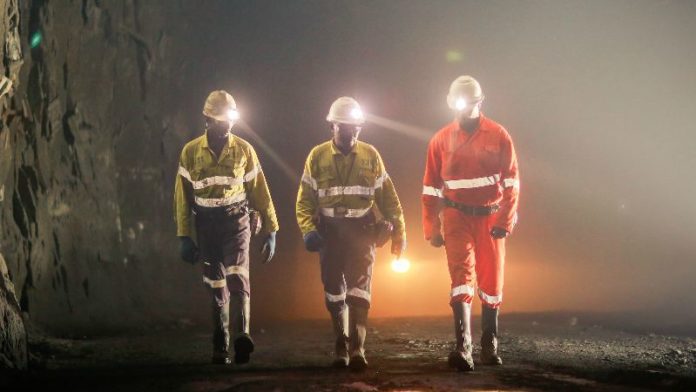
GOLD Fields has agreed a three-year wage pact with employee unions at its South Deep mine west of Johannesburg, the company said today.
The gold producer will pay an average 6.5% increase in wages over the period across all its employment brackets including an 8% improvement in the first year for its category 4 to 8 employees. This category of employee, including entry-level miners, will receive a subsequent 8% increase, or CPI-aligned lift, whichever is the greatest, for years two and three of the agreement, the company said.
The wage agreement was signed with the National Union of Mineworkers and UASA union and runs from March 1 this year to February 28 in 2024.
As part of the agreement, miners, artisans and officials will receive a wage increase of 6% in the first year increasing by the same amount – or CPI – for the remaining years.
CPI-related increases would also be applied to housing allowances, although these would be phased out over three years as required by the government, and as Gold Fields ramped up its own housing plan, it said.
A range of non-wage-related issues had also been agreed to, including an alignment of leave and shift configurations, as well as amendments to other conditions of employment with a view to standardise them across all occupational levels and simplifying associated administrative processes, said Gold Fields.
The NUM gave a glowing review of the settlement. It “commended” all the parties, including Gold Fields, saying the discussions had been conducted in a “constructive and harmonious spirit”.
“As the NUM, we look forward to continuing the much-improved working relationship between the parties for the foreseeable future,” said the NUM’s PWV regional chairman, Ndlela Radebe, in a statement.
The wage agreement is an early feather in the cap for Chris Griffith, CEO of Gold Fields from April.
In May, he praised the “… general direction of travel” of the mine following a first quarter report. “I say it with a health warning … but the general feel I get is that the company has got a better handle on the orebody,” said Griffith.
“I’m not saying we won’t amend it, but there has been a lot of evolution, of blood, sweat and tears that’s gone into a better mining method,” he said. “It’s starting to look like a mine.”
The future of South Deep has been a point of debate following the retirement of former Gold Fields CEO, Nick Holland, who was loyal to the mine despite the company losing tens of millions in rands following production disappointments.











